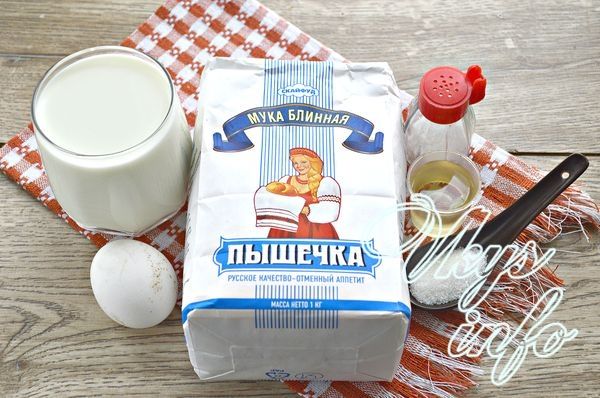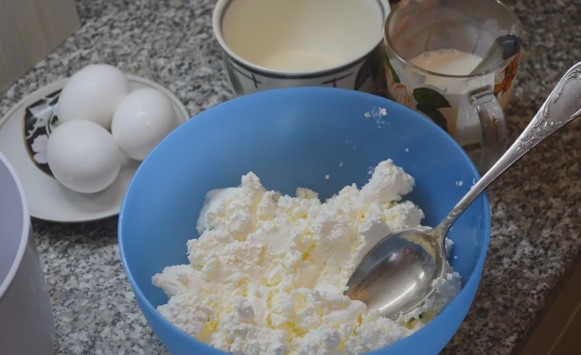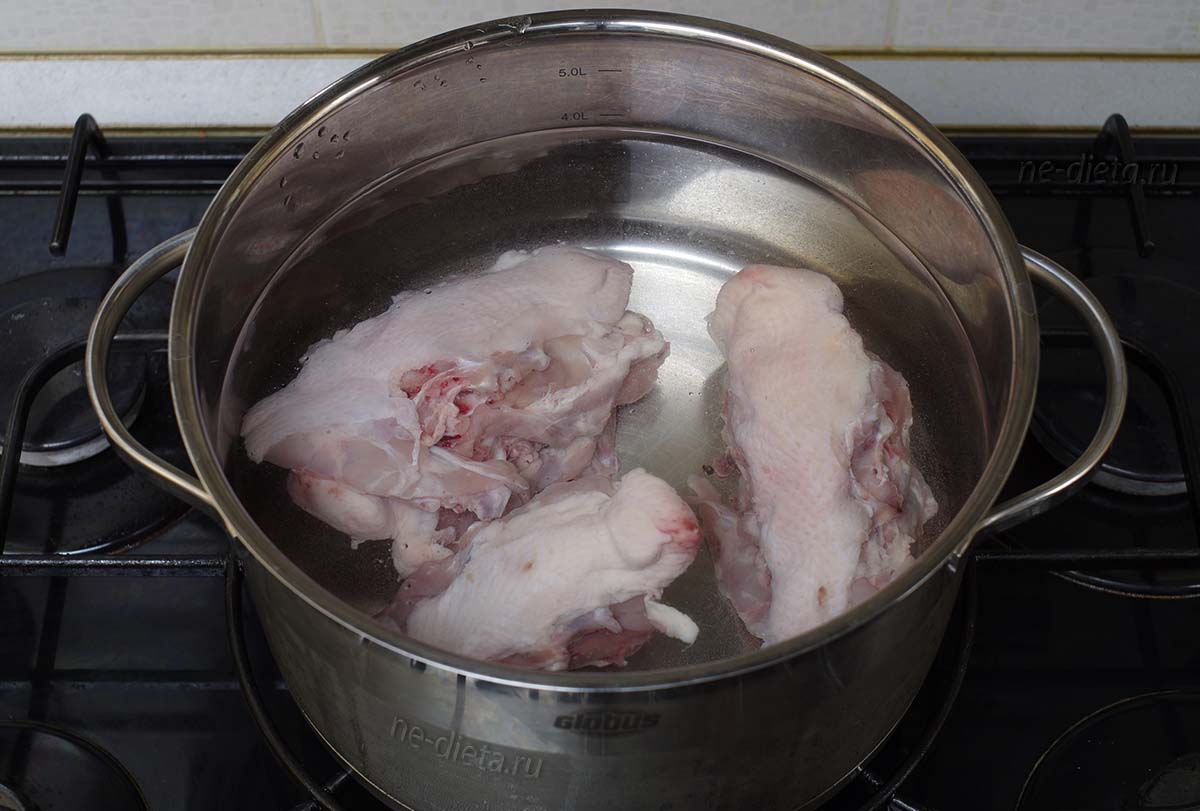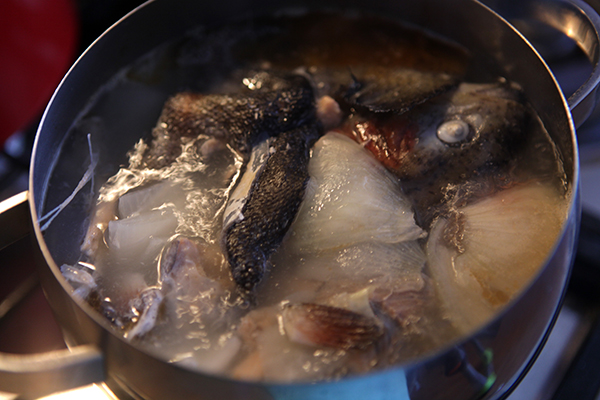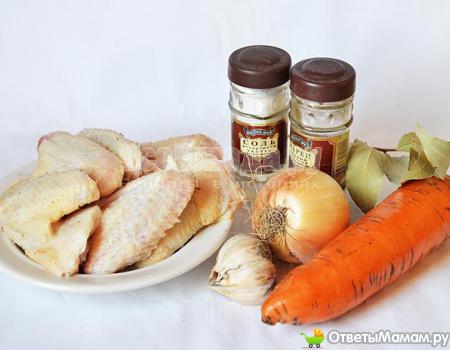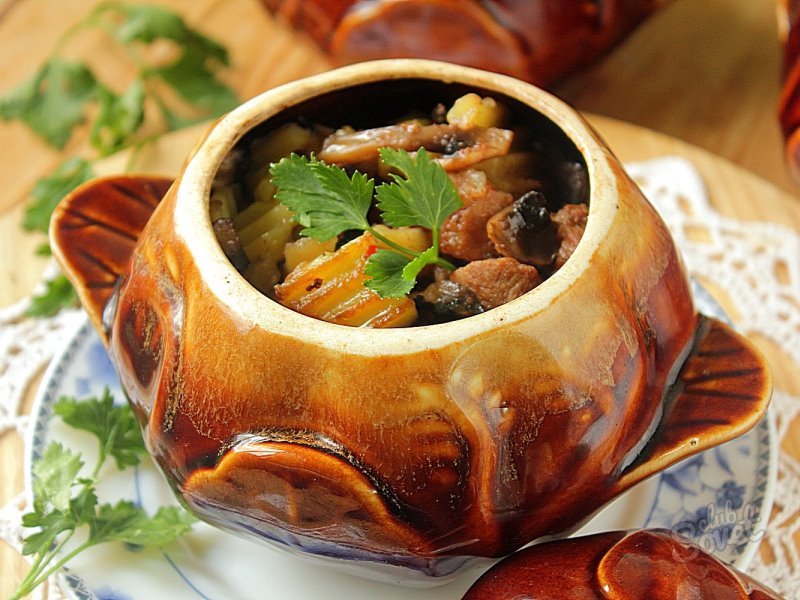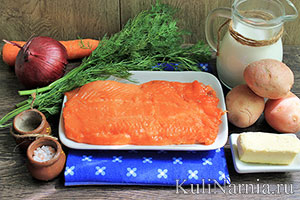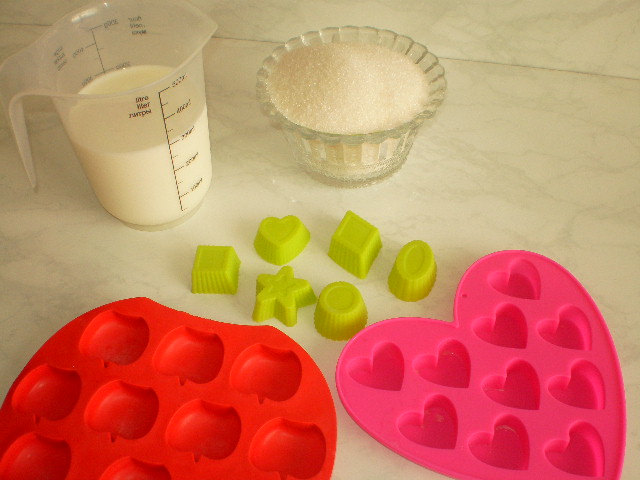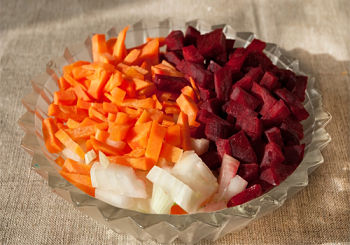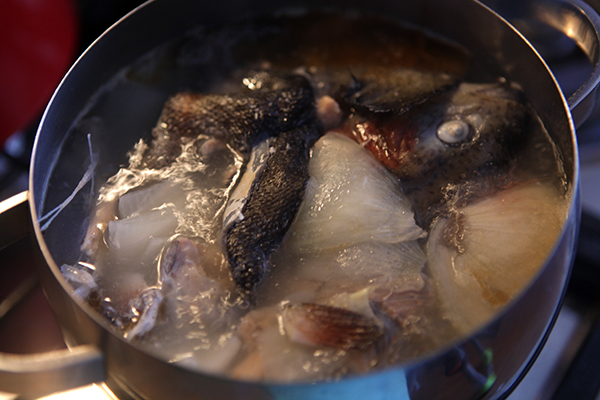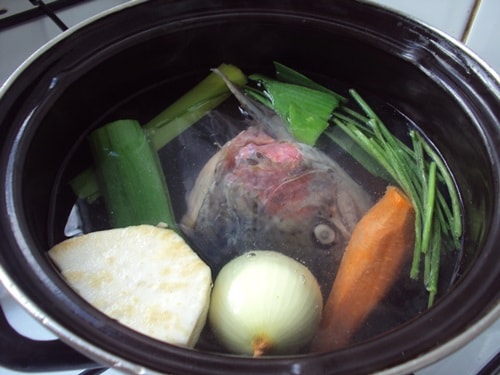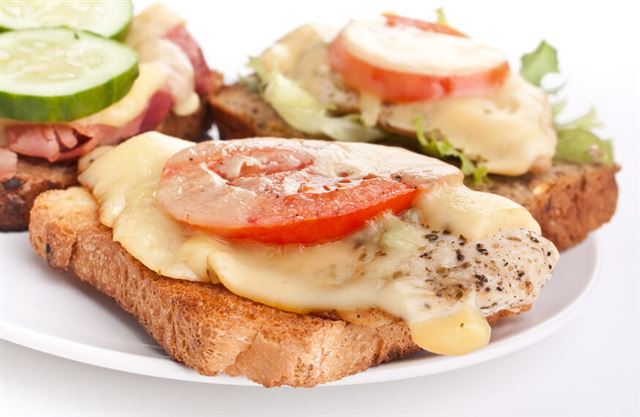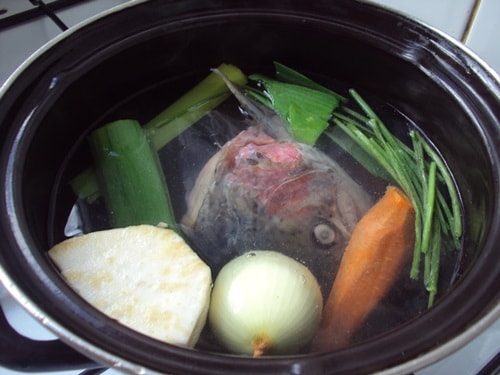Peach syrup for the winter is simple. Preserved peaches in syrup - useful harvesting options
Halved peach is one of my favorite preserves on my winter preservation list. Every year I prepare several jars of peach in sugar syrup, it turns out no worse than a store product, and it contains much more benefits.
T it is very simple to prepare such a delicious treat, especially since the preparation does not require sterilization, and you will have delicious fruits and sweet compote to taste!
Canned peach according to this recipe is suitable as a filling and decoration for home baking, cakes, snacks and desserts.
Ingredients
- peach - 1 kg;
- sugar - 300 g;
- citric acid - ½ tsp;
- water - 1 l.

Cooking method
For preservation, choose sweet, ripe, but dense peaches, without damage. You can even slightly immature fruits, the main thing is that the bone is easily detached from the pulp. Peaches should be washed thoroughly and wiped with dry napkins or a towel.


Sterilize cans in advance in a way convenient for you. Put the prepared peach halves in them and tamp tightly, but do not crush, so that the fruits do not crumple.

Bring the pot with water to a boil. Pour peaches in a jar with hot water. Cover with tin lids and steam for 30 minutes. After that, pour the water back into the pan and repeat the procedure again.

Then, pour the liquid into the pan and bring to a boil again, only now add sugar and add citric acid. Boil until sugar is completely dissolved.

Pour jars of fruit with ready-made sweet syrup and roll them up with sterilized tin lids (I pre-boiled them for 10 minutes).

Turn the cans upside down, cover with a warm blanket and leave in this position until completely cooled. Due to this, the preform will undergo additional sterilization, and the banks will not explode.
Delicate sweet slices of peaches will bring real pleasure in the cold season! This harvesting is similar to canned peaches, which are sold in stores and supermarkets. Preparing peaches in syrup for the winter at home is not difficult. The recipe is simple and straightforward. The most important point in this important event will be, perhaps, the right choice of peaches. Fragrant fruits must be ripe, with a well-separated bone. Choose whole, not crumpled peaches, without rotten places and without spots. It’s good if the peaches are about the same size.
Prepare products based on:
- 1 kg of peaches
- 200 g granulated sugar
- 1 liter of pure water for syrup
- also need 1 tsp. lemon juice or a small pinch of citric acid

The method of preparation of peaches in syrup for the winter
We start by preparing the peaches themselves. We need to remove the bone and carefully remove the skin.
First, let's take care of the skin. Rinse the peaches and put them in a heat-resistant dish. Pour fruit in full boiling water and leave them completely immersed in boiling water for 1 minute. Then drain the water, and rinse the peaches with cold water. You can simply remove the peaches from the water with a tablespoon and put in a bowl of ice water prepared in advance and standing next to it. This technique will stop further heating of peaches.
Now, with a small knife, try to carefully begin to separate the skin from the pulp, it should be easily separated. Thus, you need to clean all the fruits of a thin peel.

Let's take care of the bones. Again, with a small knife, make an incision around the circumference of each peach, cutting it to the very bone. With a knife inserted into the slot, make one or two sliding movements and the peach should easily be divided into two halves. One will be “clean”, and from the second you will have to pry off with a knife and carefully remove the remaining bone. Slices for further cooking are ready! Set them aside and make sugar syrup.

Combine water and sugar in a pan or ladle, add a little lemon juice or citric acid. Bring everything together to a boil. Dip peach wedges into boiling syrup.

As soon as the syrup boils with peaches, boil it in literally 30-40 seconds and immediately lay out the slices in sterile jars and pour another boiling syrup. Carefully seal the jars, check for leaks by turning them upside down. Now you can leave the cans under warm shelter until completely cooled.

It remains only to sign the jars and store until winter in the home pantry.

Prepare a sled in the summer - says the famous Russian proverb! Therefore, in order not to miss the sunny abundance of fruits in winter, the time has come to harvest delicious compotes. Despite all the misconceptions, they are prepared very simply and easily. But on cozy winter evenings, when you really want to plunge into the unique summer atmosphere, this problem can be solved with a jar of sunny peanut compote or
As a bonus to a refreshing drink, you also get delicious fruits. And he ate and drank, and recharged with summer energy - beauty! In my family, such blanks are in special demand. Both adults and children adore them. Therefore, I close several dozen cans every year.
What to look for when choosing fruits:
- The aroma. Ripe, fragrant fruits are better for seaming. Opening such a jar, the aroma will stand simply breathtaking;
- Ripeness. Ripe and sweet fruits are better for compotes. Unripe, green fruits are more suitable for harvesting candied fruits;
- Hardness. Dense and firm individuals will be required. Soft, ripe peaches break up quickly and whole fruits in a jar fail.

Now prepare the right fruits, jars, and other ingredients - we are starting to create!
Menu
1. Peach stew with citric acid
Citric acid gives the canned fruit and drink a slight and pungent acidity. This preparation is very tasty and cooks quickly. And flies off the table even faster! The number of peaches in relation to other ingredients is determined by yourself. They must fill the jar loosely. If you want more canned fruit than a drink, lay more. If compote is a priority, increase the amount of water and put fewer peaches.
Ingredients:
3 liters of water accounts for:
- 1 full glass of sugar (approximately 200 grams);
- 1 teaspoon dry citric acid;
- ripe, dense peaches;
- jars of the desired denomination (I usually take 3 liter).
1. First of all, you need to prepare the container. It must be clean and sterilized. This can be done in a water bath or in an oven, to whom as usual.

2. Wash the fruit thoroughly, trying to remove the "hair" as much as possible.
If you want to plant more fruits, do not do it tightly. Fruits may crumple and lose their beautiful, “salable” appearance. They will certainly be tasty, but they will be more mushy in structure.

3. Put a pot of water on the stove and bring to a boil. Once the liquid boils, pour it in small portions into cans. If the dishes are badly calcined, then with a quick pouring of boiling water, the glass may crack.
4. Cover the jars with clean, sterile lids and wrap them in warm towels. Leave on for 40-60 minutes.

5. Then drain the liquid from the cans again into the pan and put it on the fire again. As soon as the water begins to boil, you need to pour sugar and citric acid, thoroughly mixing them. As soon as the grains of sugar in the boiling compote dissolve, it must immediately be poured into banks.

6. Roll up the lids and turn upside down. Wrap in a warm blanket or towel and leave to cool completely. Usually, I leave banks for the night. The next morning you can already transfer them to the basement.
Delicious peaches in brine set off to wait in the cool room to wait in the wings.
Enjoy your meal!
2. A simple way to make compote with chopped peaches
I love this method because it is possible to die such a dish not only at a family dinner, but also put it at the head of the festive table. Peaches are juicy, fragrant and very beautiful. A compote is rich and refreshing.
Ingredients:
Sugar should be put to taste. Its amount depends on the degree of sweetness of the fruit.
Water and peaches are also determined individually, depending on how you are going to fill the banks.
I usually take 3 liters of water:
- Peaches;
- 200 grams of granulated sugar.
Cooking:
1. Peaches need to be separated from the seed.

I do it with a curly knife - it turns out very beautiful and original. Pieces are best cut into the same size. The remaining pulp on the bone can serve as an ingredient for jam or instant compote.

2. Pour water into a saucepan and set to maximum heat. Pour the required amount of granulated sugar and bring to a boil.

3. Pieces of peaches should be blanched in boiling liquid in literally 10-20 seconds.

4. Immediately from the stove, peaches will go to a specially prepared sterile jar. I lay them out half the volume of the dishes. Pour to the neck with the resulting compote.

5. Roll up the lid and turn upside down. Leave until the contents have completely cooled. After which, turn the compote over and take it to the basement or any other cool place for storage.
It turns out very tasty and beautiful. Other fruits can be harvested in the same way.
Good preparations for you!
3. Sugar-free peach compote
Unfortunately, not everyone can afford sweet desserts and drinks with added sugar. In addition, its presence in dishes does not bear any benefit. Therefore, if you avoid this ingredient, and enjoy canned fruit and compote, you really want to - this is the way for you. I cook such a compote for children. It turns out it is also sweetish, due to the fruit, so they drink it with pleasure!
Ingredients:
Here only the eye works, because for this we need only:
- Sledges are immature but sweet peaches;
- water.
In order to make the treat as tasty and sweet as possible, we will remove the peel from the fruit.

1. To do this, thoroughly rinse the peaches and put them in a deep bowl so that its edges cover the enclosed amount of fruit. Pour boiling water over the bowl and let stand for 1 minute.
2. Then drain hot water and pour cold for another minute. After that, the peel will be very easy to remove.

3. In a sterilized jar, lay fruit on a third or half of the volume.

4. The first fill we do with ordinary boiling water, pouring the jar to the top. This will help get rid of germs and substances harmful to long-term storage. Cover the jar and wrap with a towel so that the contents manage to “disperse” and not cool too quickly. In this form, leave the compote for 30 minutes.

5. Now you need to drain the water and boil it again for 5 minutes. During this time, substances released from peaches will die. Pour the cans back to the neck, roll them up and turn them over onto the lids.
During the insistence, you may notice that the liquid level drops by 1-2 fingers. This is quite normal, because the fruits absorb a certain amount of water.
6. Be sure to wrap the jars with warm material. This is done to evenly cool the contents so that the compote is well infused in a hot form and does not disappear quickly. Leave them overnight wrapped upside down. Turning over is also very important, because the lid must also heat up and thus sterilize.

Compote turns out to be very tasty, natural and rich. In winter, if desired, you can add sugar or sweetener.
The need for bright and refreshing compotes we acutely feel only in winter. Everyone knows the feeling when in the summer you do not want either fruits or vegetables that are freely available in the beds. But in the winter, we reproach ourselves for this, wanting to feast on these sweets. Therefore, in the summer, do not forget that very soon the harvest will not, and always want to eat and drink tasty.

I actively use these three recipes and they use a huge way in my family. Now, I want to summarize our topic and find out the basic rules of an ideal compote:
- To preserve the workpiece longer and not swell quickly, the fruit must either be blanched or a double fill should be used. This means that the first portion of boiling water is poured for several minutes, and then it is again boiled and added to the bank completely.
- Peaches need to be chosen correctly. They should be firm, dense, but at the same time fragrant and sweet.
- Another important aspect of the drink - you need to drink it within a year after preparation. Further storage involves the release of harmful toxins from the fruit pits. But this feature does not scare me in any way, because my creations do not always survive until the winter, despite the number of cans.
I wish you success in harvesting compotes!
Enjoy your meal!
4. Video - Compote of peaches
I hope you enjoyed this men's tale of cooking peach compote.
Choose fruits for this harvest should be with great care and only the best. Still, we’re not cooking jam. Fruits should be dense, not spoiled, without damage, without any dents and pressure sores, it is better if they are slightly unripe. Then, as a result of their preservation, a first-class harvest of peaches will turn out, which will look at 100, and will stand idle for a long time in storage.
Before preservation, peaches need to be sorted and washed
The size of the fruit also matters, but small. It is better to take medium-sized fruits - small or medium. In general, those that will easily pass through the neck of cans. In addition, the smaller the peaches, the more compact they will be placed in the container, which means that more of them will fit. For reasons of aesthetics, when fruits of a different "caliber" were picked up, we recommend taking fruits of approximately the same size for each jar.
If you have to, it's okay. This will not affect the aroma and taste of the workpiece. Just fruits in a jar fit less. In a small capacity tank - only a few pieces. But there will be a lot of syrup. Well, if the fruits are so large that they do not pass whole or half through the neck of the cans, then they will have to be cut. This will not affect the quality of the finished product either. Usually in this case, the fruit is cut into quarters.
Then wash the peaches thoroughly. To wash away all the dust from their velvety peel, each fruit will need several times well, but gently, so as not to mash, rub your hands under a cool shower or a stream of water. This rule applies to those peaches that will be preserved without the peel. After the “water procedures”, we dry the fruits one by one with a towel, being careful not to mash them.
There are several options for preserving peaches in syrup: in the peel or without it, and whole with seeds or halves (quarters) without a seed. The choice of cooking option depends on your own preferences and, in some cases, on the size of the fruit. However, the following should be noted. It is recommended to leave the peel, since the lion's share of vitamins and other useful substances of this fruit is contained in it. In addition, the fruits with the skin retain their density in the workpiece longer.

To peel the fruit in a colander, pour boiling water over it.
And regarding the bones such comments. Whole fruits look more beautiful and retain their density longer. And the workpiece is more aromatic. In addition, over time, the bones add to the taste of the whole product a piquant, but almost elusive bitterness. And, finally, after eating the peaches themselves, you can treat yourself with seeds, chopping their shells. They are also very tasty. But without fanaticism - the use of a large number of seeds can lead to poisoning with hydrocyanic acid, which is formed during their digestion.
And we must remember that it is advisable to eat a harvest of peaches with pits within a year from the moment of rolling. And fruits in syrup without seeds (halves and quarters) can be stored for up to 2 years (usually not stored longer).
To peel a few peaches, put them in a colander, first place for 2–3 minutes in boiling water, and then immediately for a short while in very cold. Dishes with boiling water and cooling water should be deep enough so that the fruits are completely immersed in them. Then lay the fruits on a towel and give them time to dry. After that, remove the peel.
To extract the seeds, and easily and quickly, it is necessary to cut each fruit along the bone. Its location was noted in peaches with a characteristic hollow on only one side of the fruit. Then we divide 2 halves of fruit. This is best done with a little scrolling of the halves in opposite directions, so as not to mash the fruits. In one of the parts there will be a bone. Gently pry or, if necessary, cut it with the same sharp knife.
Then preserve according to the selected recipe. We use carefully washed, and then sterilized and dried cans (recommended volume 0.7–1 L) and lids (for seaming or threaded) for this preform. We seal containers immediately after cooking. Then we put them neck-down on a dense and warm thing spread out over any hard, even surface, and we wrap the same thing on top. When the peaches in the syrup have cooled to room temperature, they must be moved to a storage place: cellar, warm barn or loggia, basement or refrigerator. It is possible in the pantry, but there the procurement will be stored for a shorter period.
How can peaches can be preserved in syrup?
All recipes are about the same. They differ only in the amount of sugar and whether or not lemon juice is added (to taste, but approximately 1 liter of syrup 1 tsp) or citric acid (approximately 0.5–1 tsp per 1 kg of fruit). Sugar is recommended to take 400 g per 1 liter of water for syrup. The volume of water can be easily determined by first pouring it into jars with fruits laid in them, and then pouring it into a measuring container.
It is better to do this before heating the water. Either sugar is taken by eye or to your taste - usually within 100-200 g per 1 kg of fruit. And the canning process itself is similar to that described in the 3rd chapter of the article. That is, the fill method is used.
Summer is the time of fruit abundance. Each fruit in its own way is good for our body, since vitamins contained in fruits are extremely beneficial. Not the last place among the summer fruits is peach.
Peach is a heat-loving fruit plant, native to China. Peach fruits contain carotene, pectin, vitamin C, and many other useful minerals. Doctors even recommend eating peaches in any form, as a supplement to the diet, for people to strengthen the body.
Especially in winter, when the human body feels a lack of vitamins, peaches harvested in summer will be a real find. They will strengthen the immune system and reduce the risk of colds. Here such winter preparations as peach compote for winter, peach jam for winter, peach jam for winter will be useful. Canning peaches for the winter is possible in various ways. For example, if you decide to preserve the natural taste and aroma of the fruit as much as possible, it is worthwhile to prepare the peach halves in syrup for the winter. Or there is another great option - harvesting peaches for the winter without sterilization. This method gives an excellent result, but requires a particularly careful approach to the storage of the product.
Peach flavor is not confused with any other fruit. The secret of it is in the presence of esters of some rare acids contained in the pulp of this fruit, which create such a unique miracle.
To feel this flavor all year round, in addition to traditional canning, use other methods of harvesting. An excellent option are dried fruits made from peaches. They are even more useful than canned ones, since no preservatives are used for drying. An important and necessary event is harvesting peaches for the winter. Recipes for such blanks are described in detail on our website. Choose a variant of peaches for the winter, the recipe with a photo of which you like best. And do not be discouraged if you have not done this before. Simple peach recipes for the winter are as good and tasty as the more complex ones. Start with them!
And may our advice help you:
Peaches for drying can not be cut in halves, they quickly darken and spoil. Be sure to cut them into small pieces;
Only sweet-sour and sweet varieties are suitable for drying;
Cooking jam is carried out in a multiple way alternate heating and cooling;
For jam, strong, large, ripe, but in no way overripe peaches are needed;
To freeze the peaches need to cut into slices, pour sugar and lay in the freezer in bags;
Canned peaches are sealed in jars, which immediately after seaming need to be turned over, wrapped up and left in this position for complete cooling;
All types of blanks involve the separation of peaches at least in half and removal of the stone;
When making jam, keep in mind that peaches go well with pears.
